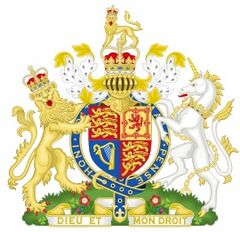| ||||||||||||||||||||||||||||||||||||
Description
It's 2650. Sivadians set down stakes on Sivad 2160. They established their own Regency with Queen Dahlia II, who would serve as first ruler of the British-governed colony world of Sivad (although they wouldn't actually make contact with any UK government representatives until after the advent of the lightspeed drive in 2282). Largely a ceremonial position, but still one of great cultural significance, she would reign until her death in 2201. The government is currently a Constitutional Oligarchy based on the traditional British Parliamentary system.
The Sivadian Colonial Kingdom comprised the dominions, colonies, protectorates, mandates and other territories ruled or administered by the Royal Sivadian Colonial Government. It originated with the British colonies and trading posts established by England in the late 21th and early 22th centuries. During the Age of Stellar Discovery in the 22nd and early 23rd centuries, the RSCG expanded greatly. A series of wars in the 17th and 18th centuries with the Netherlands and France left England (Britain, following the 1707 Act of Union with Scotland) the dominant colonial power in North America and India. The loss of the Thirteen Colonies in North America in 1783 after a war of independence deprived Britain of some of its oldest and most populous colonies. British attention soon turned towards Africa, Asia and the Pacific. Following the defeat of Napoleonic France in 1815, Britain enjoyed a century of almost unchallenged dominance, and expanded its imperial holdings across the globe. Increasing degrees of autonomy were granted to its white settler colonies, some of which were reclassified as dominions. The growth of Germany and the United States had eroded Britain's economic lead by the end of the 19th century. Subsequent military and economic tensions between Britain and Germany were major causes of the First World War, during which Britain relied heavily upon its empire. The conflict placed enormous financial strain on Britain, and although the empire achieved its largest territorial extent immediately after the war, it was no longer a peerless industrial or military power. The Second World War saw Britain's colonies in South-East Asia occupied by Japan, which damaged British prestige and accelerated the decline of the empire, despite the eventual victory of Britain and its allies. India, Britain's most valuable and populous possession, was given independence two years after the end of the war. After the end of the Second World War, as part of a larger decolonisation movement by European powers, most of the territories of the British Empire were granted independence, ending with the handover of Hong Kong to the People's Republic of China in 1997. 14 territories remain under British sovereignty, the British Overseas Territories. After independence, many former British colonies joined the Commonwealth of Nations, a free association of independent states. 16 Commonwealth nations share their head of state, Queen Elizabeth II, as Commonwealth realms.
